17.76.040 Front yard parking.
A. Purpose and Application.
1. The purpose of these regulations is to preserve the residential character of streetscapes in the city’s neighborhoods. The expansion of parking in front yard (see definition of “front yard” in Article 9) areas off driveways interferes with the pattern of building masses and open areas within neighborhoods, creates vehicle clutter, and results in excessive vehicle parking, which has the effect of creating small parking lots in front yard areas that are intended to remain as open areas within neighborhoods.
2. These regulations apply to vehicle parking within the front yard areas as defined in Section 17.158.016—F Definitions and shown in Figure 3-16: Front Yard, including the street side yard on corner lots. No person shall stop, park, or leave standing any vehicle, whether attended or unattended, unless consistent with the provisions of this section.
Figure 3-16. Front Yard
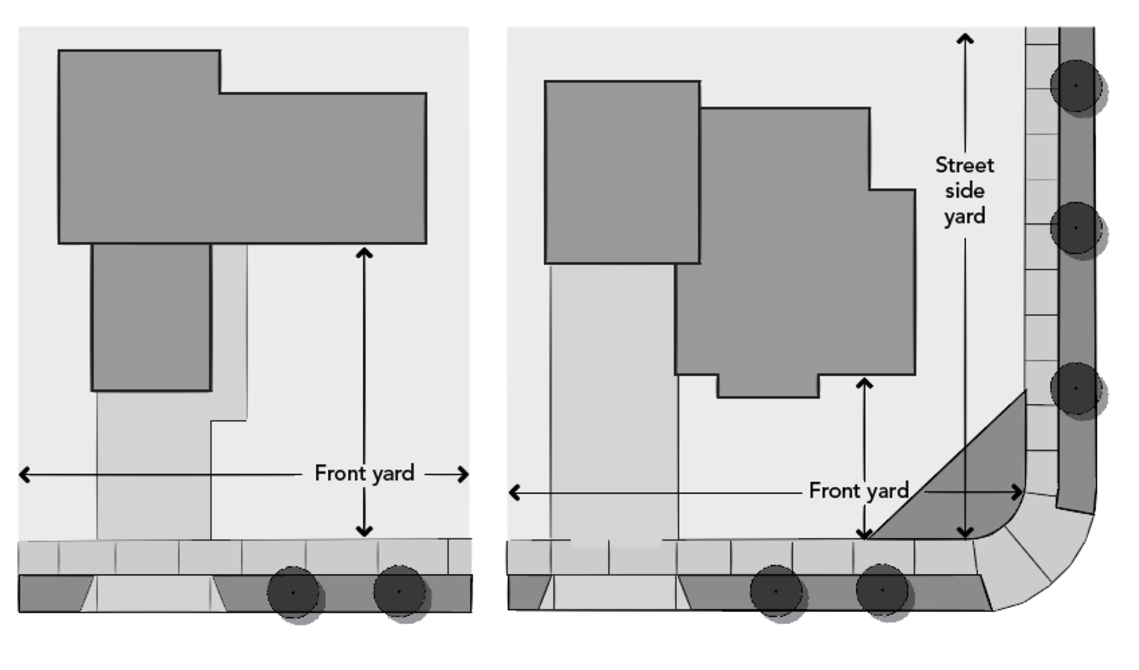
B. Allowed Front Yard Parking. Vehicles parked in front yard areas of residential lots shall conform to all of the following requirements:
1. Vehicle parking is allowed on driveways leading to garage parking or on other approved off-street parking pads and spaces.
2. Vehicles may only be parked in areas within the driveway width established to serve approved parking spaces, as defined in city parking and driveway standards, or on an approved off-street parking pad as allowed by subsection D (Single Car Garages and Single Car Parking) of this section. Vehicles shall be parked completely within the driveway or parking pad surface with all tires completely on the driveway surface.
3. Vehicles may be parked in tandem (one vehicle behind another), provided there is sufficient space that no part of the vehicle overhangs the property line or sidewalk.
Figure 3-17. Allowed Front Yard Parking
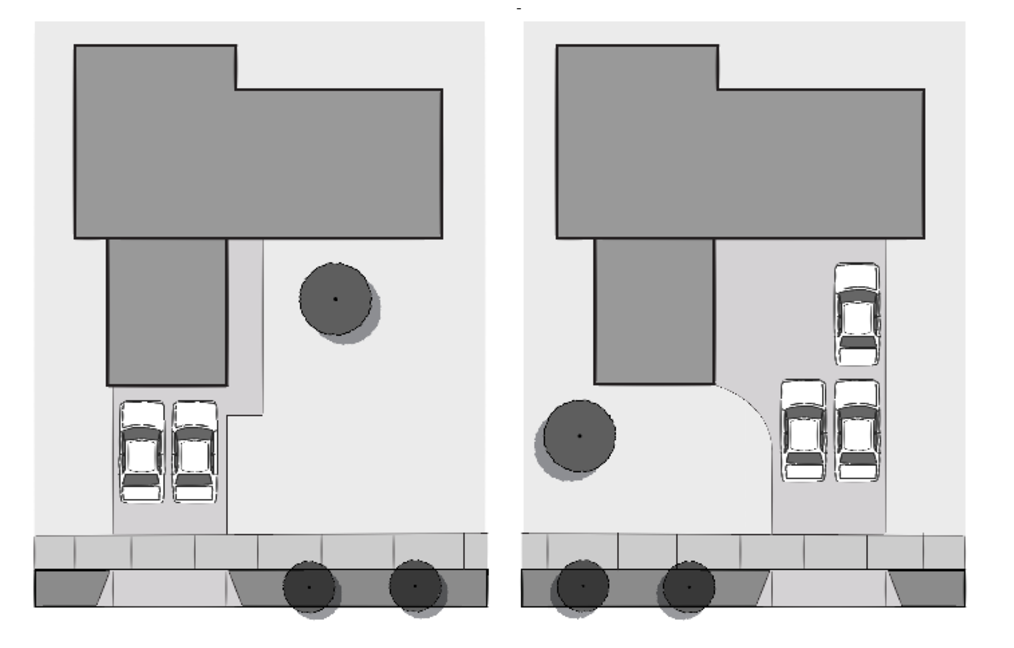
C. Prohibited Front Yard Parking.
1. Vehicles shall not be parked outside the driveway width area leading to approved garage or parking spaces or other approved parking pad or in any other manner inconsistent with subsection B (Allowed Front Yard Parking) of this section. (See Figure 3-18: Prohibited Front Yard Parking.)
Figure 3-18. Prohibited Front Yard Parking
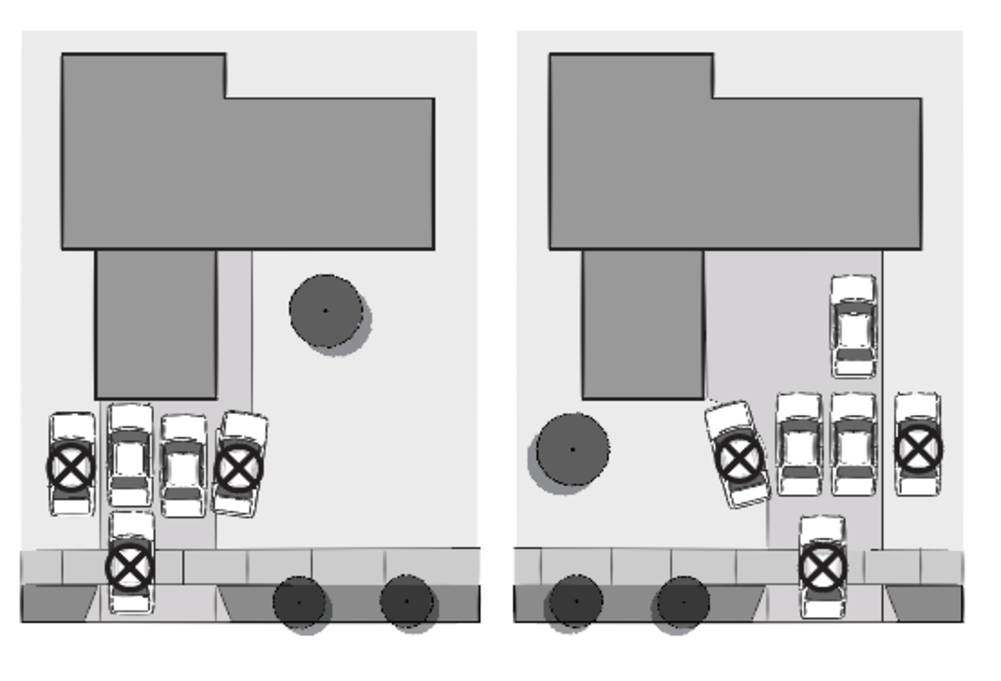
2. Parking where vehicles are “straddling” or are partially on the driveway or parking pad and partially on an unpaved or paved surface next to the driveway is prohibited. (See Figure 3-19: Vehicles Straddling Driveway Prohibited.)
Figure 3-19. Vehicles Straddling Driveway Prohibited
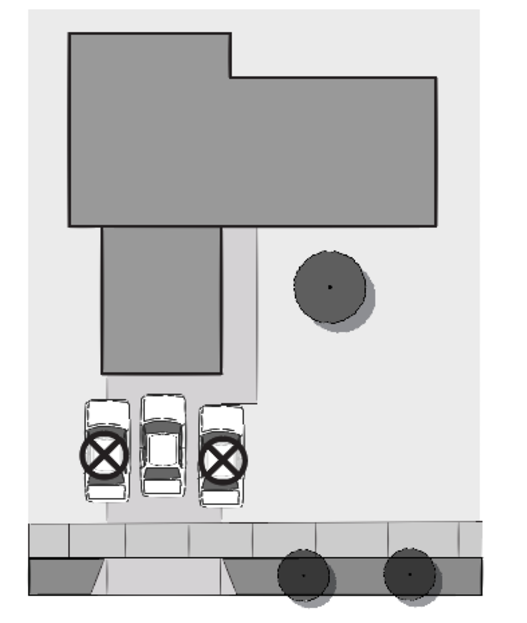
3. Vehicles shall not be parked diagonally or in any other configuration that would require vehicle circulation outside the width of the driveway area, except as provided in Section 17.72.090(C) (Tandem Parking). (See Figure 3-20: Diagonally Parked Vehicles Prohibited.)
Figure 3-20. Diagonally Parked Vehicles Prohibited
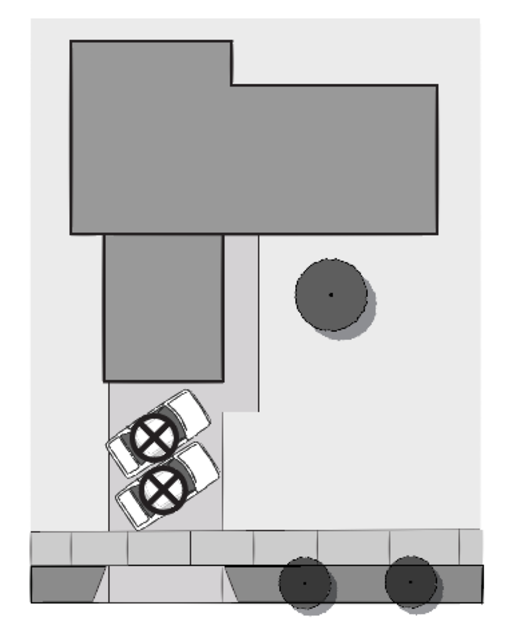
D. Single Car Garages and Single Car Parking. Residential properties that have parking configurations of a single car garage or single car surface parking similar to Figure 3-21: Single Car Driveway may establish an additional parking pad between the driveway and the nearest property line upon approval of a construction permit and conformance with the following requirements:
1. The parking pad shall meet minimum parking space dimensions of parking and driveway standards to ensure adequate space for vehicle parking on the driveway and adjacent parking pad.
2. The parking pad shall meet minimum depth requirements of the parking and driveway standards (typically eighteen and one-half feet) and vehicles may not be parked to overhang the sidewalk or property line into the public right-of-way.
3. The parking pad space shall be surfaced with alternative paving to achieve aesthetic and environmental objectives. Examples of alternative paving surfaces include, but are not limited to interlocking pavers, eco-block, porous AC paving, or cobblestone. Parking pads for single car garages and single car parking established prior to the adoption of this section may be exempted from this requirement.
4. Vehicle Circulation. There shall be adequate driveway ramp access such that vehicles can access the parking pad location from the public right-of-way without crossing over sidewalk area or other public improvements outside of the driveway ramp area including transitions.
Figure 3-21. Single Car Driveway
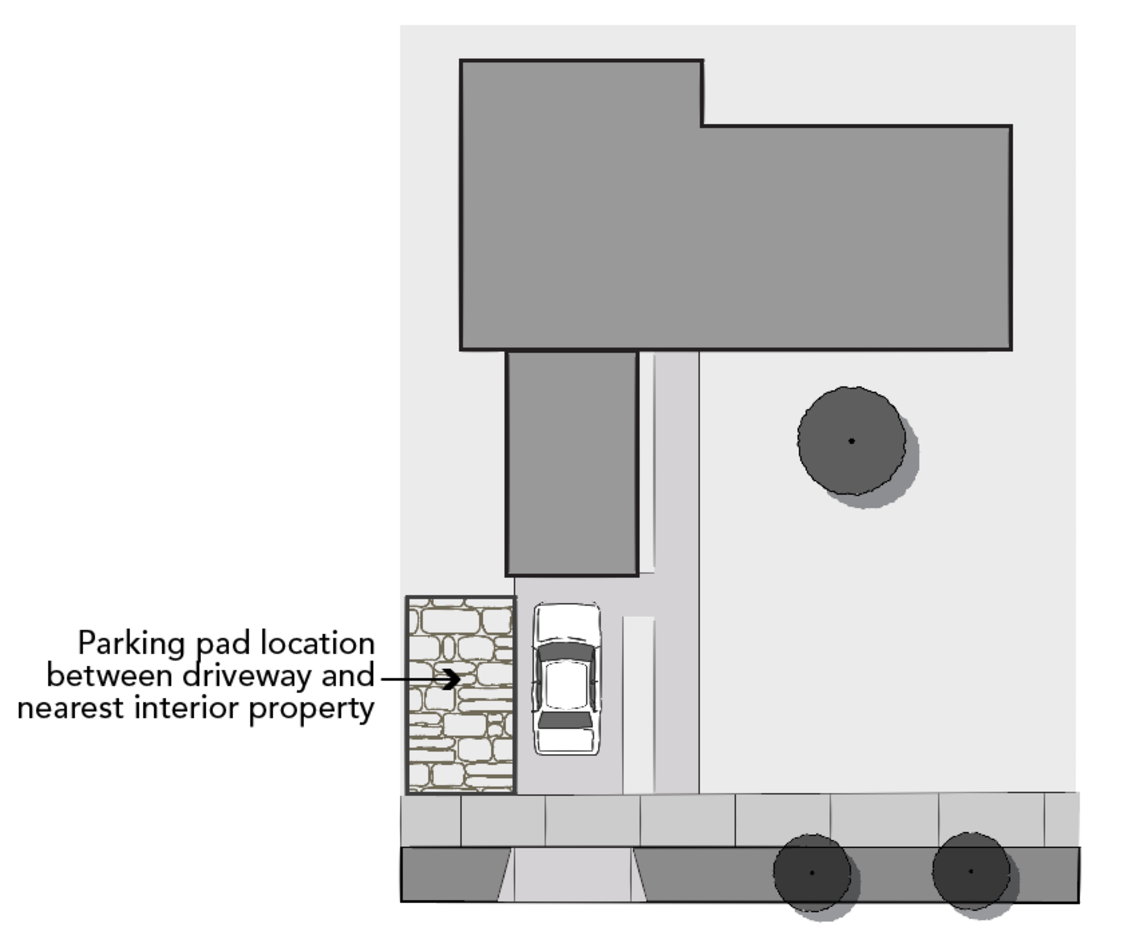
E. Legal Nonconforming Front Yard Parking. In cases where permits have been granted to allow parking in the front yard area that is not in conformance with subsection B of this section; or, in cases where evidence has been provided that the pavement surfacing has been constructed for the purposes of parking a vehicle in compliance with Section 12.38.040 (Pavement standards) prior to the adoption of Ordinance No. 941 (1982 Series) establishing Section 17.70.170(C), such parking shall be considered a legal nonconforming use, and may continue. (Ord. 1705 §§ 17, 39, 2021; Ord. 1650 § 3 (Exh. B), 2018)